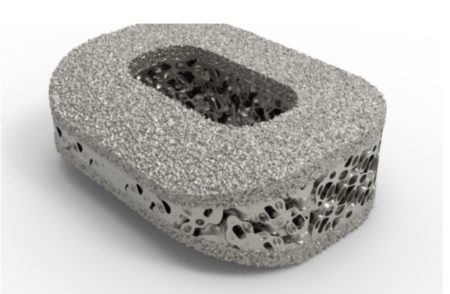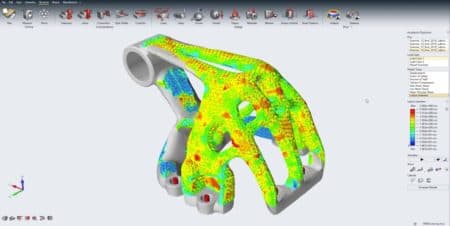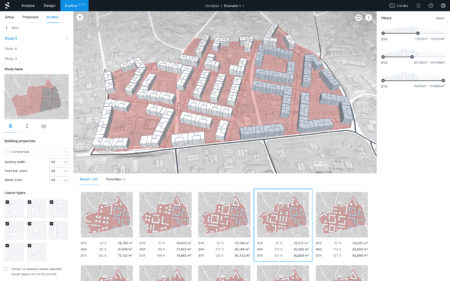PRODUCT DEVELOPMENT TASKS CAN GET PRETTY COMPLICATED and are considered complex optimization issues most of the time. As a result, design teams have to continuously deal with product development tasks through a series of interpretations, refinement, and engineering analyses.
Technology has come a long way and offers many alternatives. Digital analysis has developed to such an extent that designs can be evaluated in only a few seconds. Moreover, algorithms can adjust the geometry of parts between simulations automatically. New generative design systems have come up with many new solutions for designs, even ways you can’t even imagine. Let’s not wait any further and find out how generative design can change the process of product development in the future!
How will generative design change the product development process?
A material reduction in the manufacturing phase
“Generative design” brings immense relief to engineers only because they need to use less material during product development. However, depending on the material used, this directly affects the expenses made for manufacturing a product.

Lightweighting is the term used in product design to use generative design tools to reduce the weight to increase performance.
Disregarding the type of material used, using less amount of material will always result in saving more money. Some companies that completely shifted to using generative design are Under Armour, Airbus, and much more. The new designs require less material and weigh much less than before, making the manufacturing process more straightforward.
We can use Airbus as a great example to define the generative design innovations made. Since Airbus started using generative design, they emit much fewer carbon emissions, up to nearly 500,000 tons!
Most companies similar to Airbus are working towards a greener design, firmly concerned about protecting the environment and increasing their environmental regulations.
Product development optimization
Generative design makes a tremendous difference in the process of product development. It simplifies the operations that are involved in reducing the design time. Most companies will be digitalized 2D drawings with 3D modeling, allowing them to aggregate all designs that both architects and engineers come up with. Thus, the designs are now classified as digital models.

Altair’s Inspire software supports optimization and simulation on both lattice and solid-lattice compound components and parts as part of it generative design features.
Let us take an example of a design-build company that can develop modular housing concepts alongside hundreds of components through generative design. After this, companies can standardize their components and modules with unique prices and codes. In short, this can immensely benefit all clients who are seeking to build a new house.
Thanks to generative design software, companies can save significant amounts of money on the product development phase and serve more clients faster.
Generative design can flex well
Most of them can see additive manufacturing technologies (AM) and generative design as partners in crime. All because they work so well together with organic and complex shapes. Yet, additive manufacturing can hardly be considered a requirement for implementing a generative design. Furthermore, the latest generative design can make up for the limitations accounted for in the manufacturing process.
This type of flexibility broadens the range of parts that generative design can target and makes it much easier for design teams to consider alternative options in the manufacturing process.

Autodesk Spacemaker is generative design software for urban planners, architects, and real estate developers.
Moreover, a considerable benefit of generative design is that it isn’t limited to structural-design tasks. It’s already used in different engineering domains like thermal design, fluid-flow optimization, optics, electrical design, and more.
Additionally, urban planners and architects adopt generative techniques to optimize building and city space layouts. Many similar algorithms are applied to other complex optimization issues outside the product-design space.
CAD software
While engineers and product developers continuously create and design new products, large constructions and components use recent CAD software and computers. In contrast, generative design turns computers into the new driving force of product development, also, considering the fact that CAD has been around for more than 50 years!
Before getting to work, engineering designers will define their functional requirements and design parameters by measuring the weight, material type, load capacity, costs, manufacturing process, and maximum size. The computer will do the work later by calculating optimal geometry and creating many design drafts that meet the specified criteria. Therefore, simulation integrates into the product development process through generative design.

Unit types inside a multi-family building type inside of TestFit’s software—a popular new generative design tool that is supplanting CAD tasks.
The advantages that companies achieve by using generative design are significant in number. As a result, product development productivity will increase tremendously, and only by saving more time innovations and creative ideas will arise in the research phase.
For example, robust designs have less weight and much more durability. This promotes product optimization of new products created and improves the manufacturing phase, thus reducing production times and material costs and offering a higher degree of personalization.
The use of AI
After hundreds to thousands of design drafts have been created, the AI will select the most suitable designs based on the requirements stated. On the other hand, the developer can suggest different design variants and use parameters such as the ones that are the lightest models, suggestions for different types of materials, and more.
The AI has an excellent level of technology that allows developers to have optimized design targets quickly. After the designs that will be used are chosen, the first prototypes will be produced in 3D printers or milling machines, or results will automatically be passed on to the test based on supply chains, quality data, cost calculations, and more. This doesn’t only increase output but saves time as well.
Customization options
Industries are always under lots of pressure for keeping up with customer needs and habits, only to survive throughout their industries. Therefore, those who operate in different industries and want to do better continuously must find new ways that best fit customer needs and stand out from their competitors.
Advertisement
Industries need to offer the required customer care to attract and retain customers with different tactics. However, keeping up with the needs and wants of customers regarding customization may become costly and time-consuming.
For example, Adidas has started to use 3D printing and is producing customized 3D printed mid-soles to support customization options. Moreover, they plan to continue doing this even in more significant numbers to promote a personalized experience to the maximum level.
Wrapping It Up
Well, that’s about it for this article. Hopefully, you understand how well generative design approaches are evolving and bringing a whole new level of innovation to the product development phase. It’s making companies change how they operate, to reconsider their investments in tools, product development, and more.
All we can say is that if you haven’t started to use generative design in your business and are thinking twice about it, consider using it in order to stay updated with the latest trends in the product development phase. Moreover, it is an excellent idea for reducing the weight of your product and reducing production times. Especially if you are an engineer or experienced designer, time needs to be on your side and so do cost reductions.
Figure out how it may work for you in your business and what kind of innovations it may bring. After all, we did mention it’s cost-effective and saves time, so that is an upper hand for you
About the Author
Tony Ademi is an SEO freelance copy and content writer with three years of experience. With hundreds of SEO-optimized articles written, Tony is proficient in writing for the digital marketing industry and tries to always stay up to date with different SEO algorithms. His love for writing began at a young age when he wrote a book at the age of 16, but never managed to publish it. In other words, for every article he writes, his main focus is to do in-depth research and make sure the article is easy to read and clear to understand, providing great value to the target audience.
Image Credits
Format equates to “party with copyright” / “party with reserved rights of use.” (eg: image: JPW / Architosh. All rights reserved.)
Title image credit: Screenshot from YouTube video on Autodesk Generative Design / Architosh. All rights reserved.




Reader Comments
Comments for this story are closed